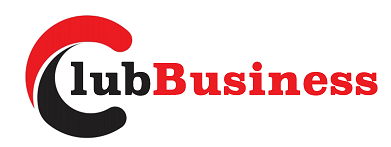Having an Automated Teller Machine in your business space or store can be a big advantage. It can bring in more customers, make sure that the customers have access to instant cash if they need to purchase or avail of something from your store and help businesses earn additional income.
But getting a machine set up in your store takes a lot of time and work, as well as careful research. And it is not compatible with every business. Automated Teller Machines are most advantageous in locations with heavy traffic like downtown shopping districts, malls, schools, universities, or churches. It also has advantages for stores that operate in cash or businesses that accept tips like restaurants or bars.
To know more about the history of ATMs, click here for more info.
How to get ATMs
If you think that local businesses are good fits for ATMs, make sure to finish reading this article for some tips.
Choosing the right model that works for a certain store
People have basic options when it comes to setting up an Automated Teller Machine. Some stores qualify for placement. It is when machine companies set up and maintain their ATMs in stores. It comes with as little costs as possible in the store. And entrepreneurs do not need to worry about keeping the machine stocked or fixed if it is broken or things go wrong.
But people also do not earn a slice of the charges collected from the ATM. Not only that, this option is only open to ventures that have a lot of foot traffic or can maintain tons of usage. People will need to talk with ATM distributors in their area to know what their exact qualifications are for this kind of offering.
On the other hand, entrepreneurs can purchase ATMs, set them up in their location, and help maintain them independently. It comes with a high startup cost. But entrepreneurs do get to keep all the charges that the ATM collects. This option is best for establishments that do not qualify for placement and need to increase their revenue over time.
Visit https://en.wikipedia.org/wiki/ATM_usage_fees to find out more about usage fees.
Some machine firms also offer partnership or leasing options. It is usually a split between the other options. Entrepreneurs need to pay a renting or a leasing charge to get the ATM set up in their location. But this option is not as costly upfront as purchasing an ATM.
And individuals get to keep a portion of the fees collected. It may be an advantageous option for people that do not qualify for placement and do not have the capital to invest money in a new money dispenser. It can also work for businesses who are planning to purchase but want to test the market first.
Calculate potential earnings
According to service providers, the average Automated Teller Machine uses around 300 to 400 times per month. And users spend 20% to 25% more at businesses like convenience stores compared to other establishments. So, having this kind of venture can generate huge returns.
But it is up to the entrepreneurs to know how much extra income they can earn and whether the price tag is worth it. If your company or store is located in a high-traffic area and qualifies for placement, this is pretty simple since you may be able to set up the ATM with little to no cost.
Entrepreneurs can earn more for their trade by allowing their clients to easily-accessible cash that they need. If you plan to lease or buy ATM machines now, the calculation of potential earnings becomes more complicated. It is imperative to know how many individuals come into the establishment daily. The more traffic the establishment gets, the more people are likely to use the device. But if the establishment and the surrounding area also accept debit or credit cards, only a small number of people will use the device daily.
To get a good look at how many clients the device might be able to collect through banking fees, notice when people pay cash, ask for cash backs from debit or credit card purchases, or ask the nearest device in the area. Entrepreneurs need to factor in the price and cost of maintenance to know how much they can make and whether purchasing a device is worthwhile for the store or not.

